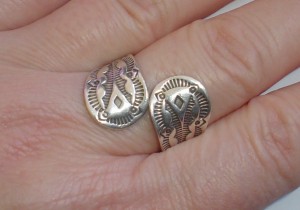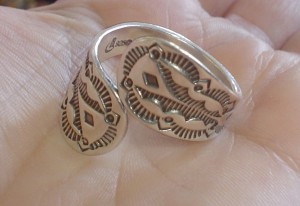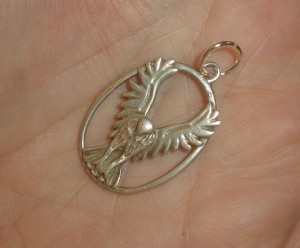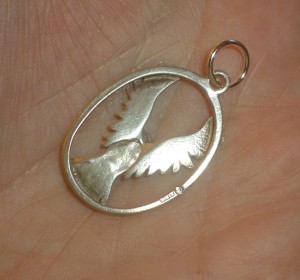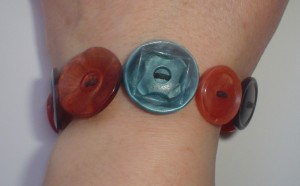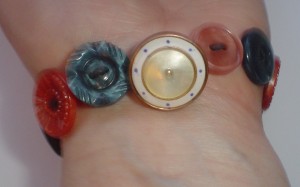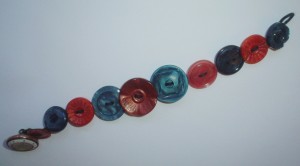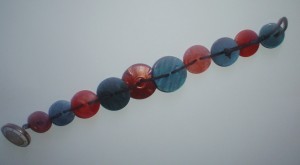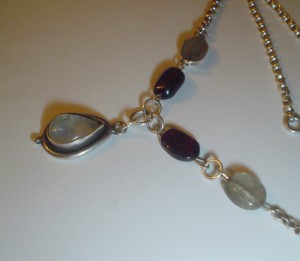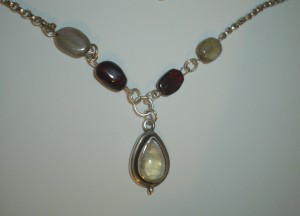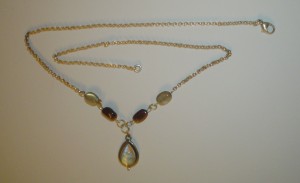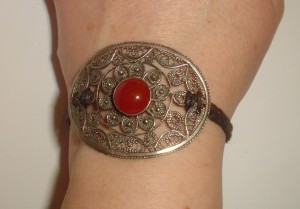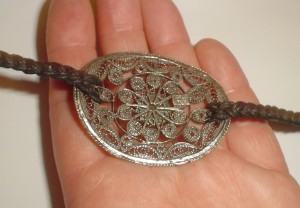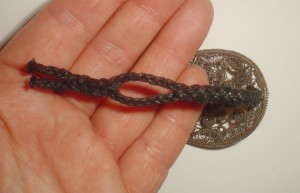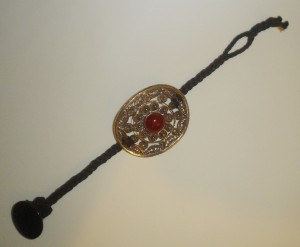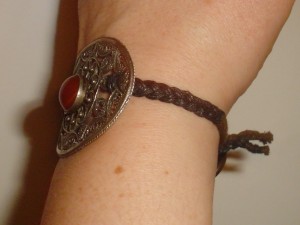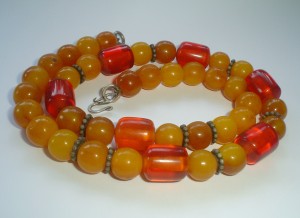The Bay of Evil isn’t what it used to be for sellers, but sometimes you can have a magic moment as a buyer. While browsing the jewellery section recently, I saw this ring. The photo was blurry and the description just said “silver ring” (or something equally short and uninformative), but it just had that “look” – the first thing I thought was, “I bet that’s Navajo silver.” Turns out it wasn’t Navajo silver, but it was something almost as good. Firstly, the 925 mark on the inside proclaimed that it was indeed silver*. Then there was a letter R, and a copyright symbol. If you’ve never come across this mark before, it’s a range called Relios, by American jewellery designer Carolyn Pollack. The company, which has featured on QVC’s UK website (though not any more I’m sorry to say), is based in New Mexico and specialises in “South Western” style jewellery. So my “Navajo” guess wasn’t too far out.
*Sadly, not all jewellery marked with “925” is actually silver. There are some fakes out there so if you want to be totally sure you’re getting the real thing, stick to items with either a full hallmark or a reliable trademark, like my ring. But if you’re me, sometimes you’ll have a punt anyway – it can pay dividends and if you put a limit on your spending, you can end up with a real bargain.

